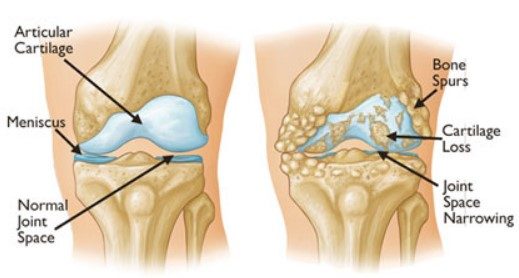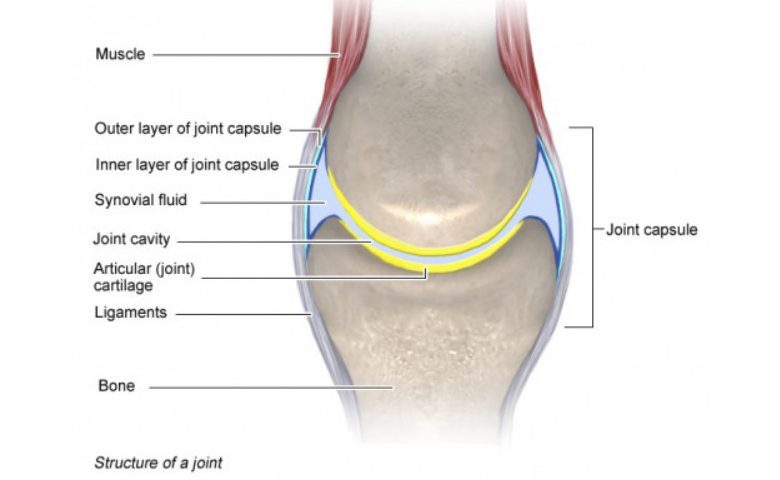Joint Repair and Regeneration:
Science and The Way Forward!
The human body consists of complex structures made up of muscle, bone, cartilage, and ligaments designed to carry our weight and assist in our movement as we continue with our day-to-day tasks. During embryonic development, the joints are formed in conjunction with the associated bones’ formation and growth. Mesenchyme is the body’s connective tissue of the body, which gives rise to all bones, joints, and cartilages.
What Makes Cartilage So Important?
Cartilage is a complex yet incredible substance which covers the joint and bone surfaces to provide a smooth surface so that the bones in joint don’t rub against one another. This layer is usually 0.2-0.5mm thick, and on surfaces like the knee-cap, it can be as thick as 6mm to pass the pressure in the joints on to the bones underneath it. This added layer allows the joints to bear heavy loads and carry out intensive tasks and workout routines.
Cartilage Regeneration: Need for Medical Intervention
Articular cartilage is essential for our movement across space and in carrying out excessive tasks. Still, once it is damaged or injured, it is unlikely to grow back or repair itself. This damage is often a result of injuries, poor alignment of the joint, heavyweights, excessive activities, or the joint’s overuse. The cartilage cells, also known as chondrocytes, do not replicate, which means that once the tissue is damaged or wears out, chances are it may not grow back on its own. The reason is that there are no blood vessels in the articular cartilage, which makes it inaccessible to the red blood cells for repair and healing, so an external source or an intervention is required.

However, the joint or the bone tissue underneath the cartilage can repair itself. According to the new research, there are ways to regenerate or repair damaged cartilage through a transplant. In some cases, doctors also make small cuts or abrasions into the bone underneath the damaged cartilage, and this technique is believed to stimulate new growth. If the damage is beyond repair, then the damaged portion is cleared away entirely, and then the process of making abrasions in the bone is carried out. This intervention has achieved fruition in the medical field, and experts are now looking at innovative ways to carry out this procedure.
Wear and Tear
According to the recent statistics, more than 50% of adults, especially older people (age 60 and above), suffer from the degenerative joint degenerative disease. It is associated with the wearing out of the cartilage and reduced flexibility, endurance, and strength of the joints (AAPM&R, 2020). That often results in pain, weight gain, and a continuous repetitive motion, which leads to inflammation and structural damage to the bones. This disease is also known as Osteoarthritis (OA), and it mostly affects the knees, hips, spine, and hands. The wear and tear of the cartilage are harder to repair and heal with age. To tackle this, medical experts have come forward with innovative methods and techniques for joint regeneration that have proved useful so far, and the quest for finding better treatment continues.

Promising Research: The ‘Human Skeletal Stem Cell’
Scientists at the Stanford University School of Medicine have discovered the ‘human skeletal stem cell’ can be isolated from the bone and regenerated from individual specialized cells in fat. They can give rise to the cells responsible for making new bones, the spongy stroma of the bone’s interior, and the cartilage that keeps the joints function smoothly. They also eliminate the pain and relieve the tissues from the inflammation or damage. It is anticipated that this discovery would pave the way for treatments that effectively regenerates bone and cartilage in people.
It is essential to add that the skeletal stem cells and the mesenchymal stem cell are two different cells. The mesenchymal stem cells can repair skeletal tissues, fat and muscle serve as an all-purpose cell, and they can be isolated from the blood, bone, and even bone marrow. Still, the skeletal stem cells can only be extracted from the bone. In a recent experiment, three patients were injected with the mesenchymal stem cells from fat, and as a result, they lost their sight. This brings into the conversation that clinical trials haven’t been very promising until now, but scientists are hopeful that it might work.
Adding to this research, the biomedical engineers at Hopkins have also made significant progress. They have extracted stem cells from adult goats, which grow into a tissue that resembles cartilage. A fluid, filled with ‘stem cells’ and nutrients are injected into the damaged tissue, and by using light, the fluid is hardened into a gel-like stable substance. This substance is believed to multiply and evolve into new bone or cartilage and eventually replace the injured tissue.
There are multiple procedures and techniques under consideration for joint regeneration, and scientists have made significant progress in the last decade. Still, the successful restoration of joints and cartilage is yet to be achieved. Millions of patients have arthritis, joint injuries, and other issues related to old age. The existing medical procedures in collaboration with engineering are just enough to relieve patients of the pain and keep the joints working.
Effective Regeneration Treatment May Take a While!
Joint regeneration and repair treatment are still in its initial stages of development. It may take years before scientists and researchers come forward with an effective remedy for cartilage repair. Till then, it is important to include vegetables, whole grains, and nuts to one’s daily food intake so that the bone and tissues are strong enough to withstand weight and pressure. Certain foods have shown promising results in fighting inflammation, strengthening bones, and improving the immune system, which reduces the risks of joint degeneration. Maintaining optimum body weight and exercising helps build endurance and flexibility, which prevents the tissues and the bone from fatal injuries.
References
AAPM&R. (2020, June). Degenerative Joint Disease. Retrieved from Physical medicine and rehabilitation (PM&R)
Anthony R. Martín, J. M. (2019). Emerging therapies for cartilage regeneration in currently excluded ‘red knee’ populations. Regenerative Medicine.
Devries, C. (2016, October 24). Can Damaged Cartilage be Fixed? Retrieved from Sports Health
Health, B. (2020). Cartilage Regeneration. Retrieved from https://www.brighamandwomens.org/medical-resources/cartilage-regeneration#:~:text=The%20procedure%E2%80%94called%20autologous%20chondrocyte,regeneration%20with%20the%20surrounding%20cartilage.
Medicine, S. (2018, Sept 20). Study identifies stem cell that gives rise to new bone, cartilage in humans. Retrieved from Standford Medicine
Moriya, T. (2006). Bone and Joint Regenration Technology. AIST.
Sabaawy, M. L. (2015). Cartilage regeneration for treatment of osteoarthritis: a paradigm for nonsurgical intervention. 76-87.

